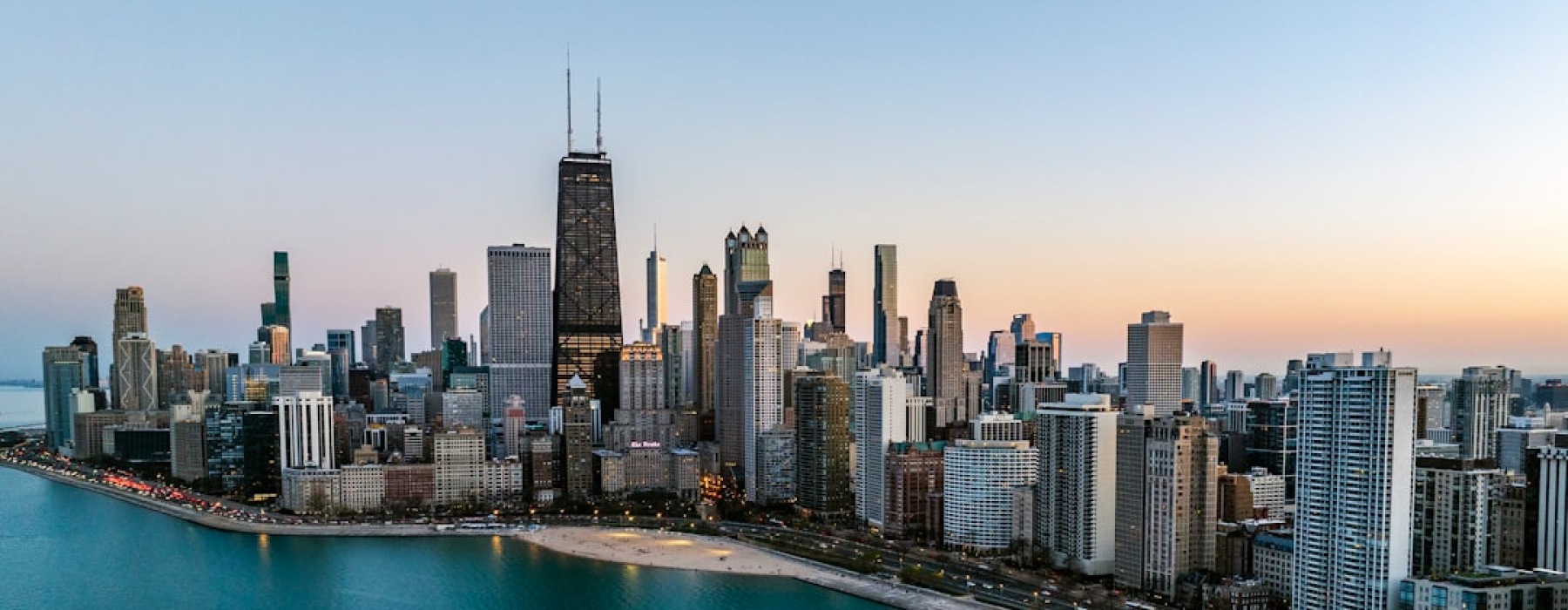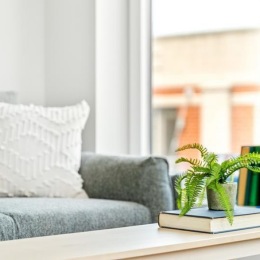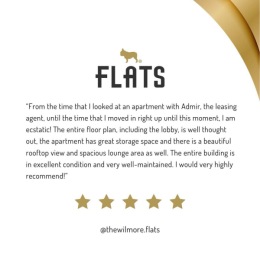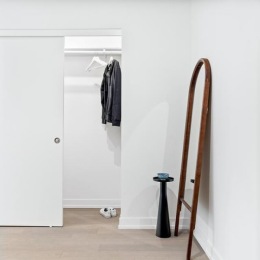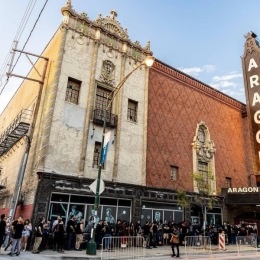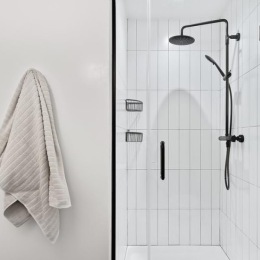Why Chicago's Rental Market Is Your Gateway to Urban Living
Finding apartments in chicago opens doors to one of America's most dynamic rental markets, with over 23,000 available units spanning from historic walkups to luxury high-rises. Whether you're drawn to lakefront views, world-class dining, or vibrant neighborhoods, Chicago offers rental options that fit every lifestyle and budget.
Quick Chicago Apartment Search Guide:
- Average rent: $1,913 per month across all unit types
- Studio apartments: Start around $1,534/month
- 1-bedroom units: Average $1,910/month
- 2-bedroom spaces: Typically $2,410/month
- 3-bedroom homes: Around $2,878/month
- Top neighborhoods: Lincoln Park, West Loop, Lakeview, Uptown
- Most valued amenities: In-unit laundry, air conditioning, fitness centers, pet-friendly policies
The city's rental landscape spans from trendy converted lofts in historic buildings to modern high-rises with rooftop pools and coworking spaces. Popular neighborhoods like Lincoln Park offer tree-lined streets near the lake, while areas like West Loop provide easy access to downtown offices and restaurants.
With excellent public transportation connecting every neighborhood and amenities that cater to remote workers, pet owners, and urban explorers alike, Chicago's rental market continues to evolve with the needs of modern renters.
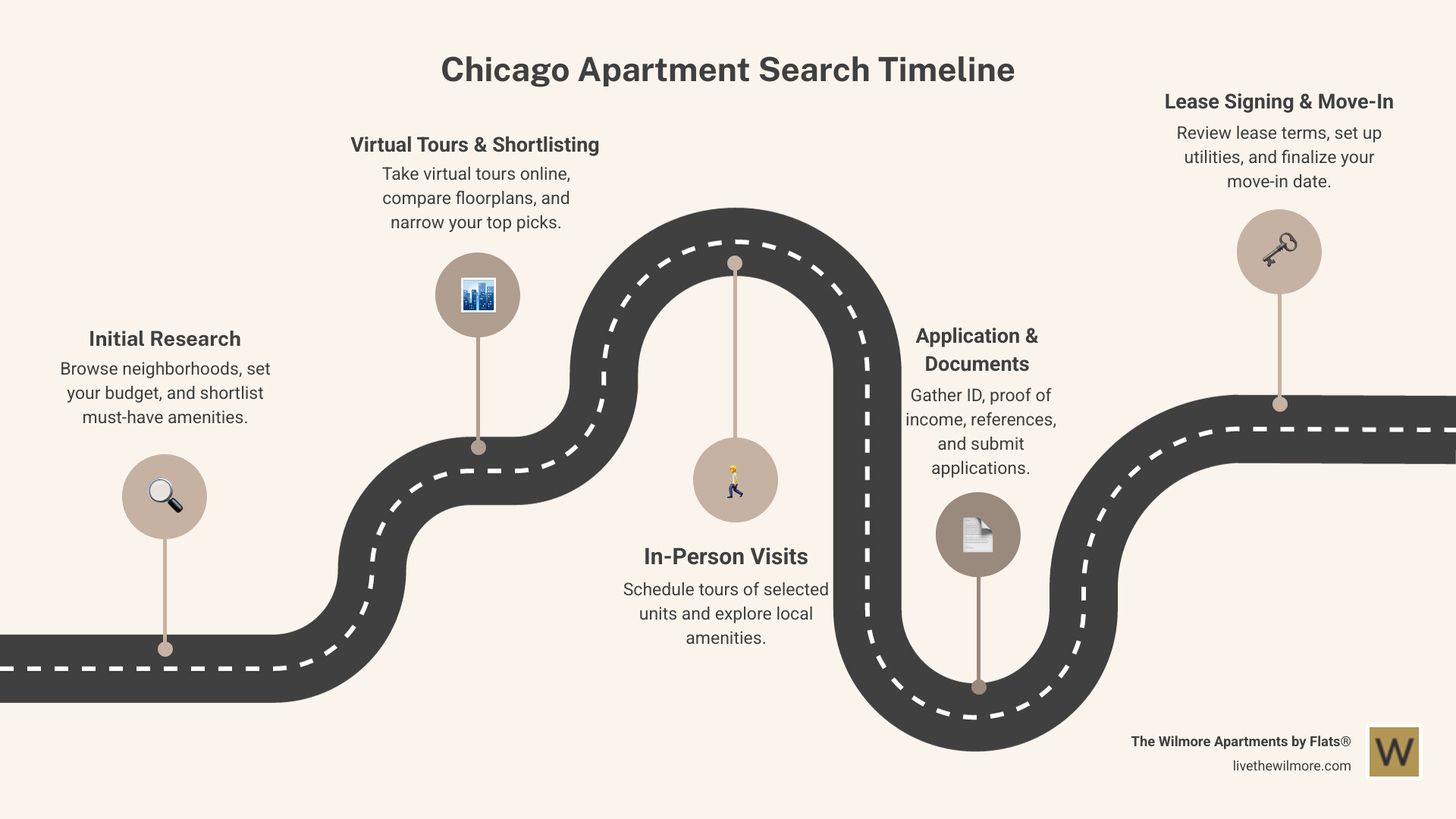
Mapping the Chicago Rental Landscape
Chicago's rental market offers incredible diversity, with apartments ranging from converted historic buildings to sleek modern towers. The city's 23,518 available rental units create a competitive but accessible market for renters seeking everything from cozy studios to spacious three-bedroom homes.
The rental inventory spans multiple property types including traditional apartments, condos, townhomes, and unique loft spaces. Historic courtyard buildings in neighborhoods like Lincoln Park blend charm with modern updates, while newer developments in areas like the West Loop feature cutting-edge amenities and smart home technology.
Market data shows that apartments in chicago typically range from $1,534 for studios up to $2,878 for three-bedroom units, with significant variation based on location, building age, and amenities. The city's rental market remains dynamic, with new listings appearing regularly and availability changing frequently.
Understanding Supply & Demand
Chicago's rental market benefits from a healthy balance of supply and demand, with new construction projects adding modern units while historic buildings undergo renovations to meet contemporary standards. The city's diverse housing stock includes everything from 1920s courtyard buildings to brand-new high-rises with rooftop pools and fitness centers.
Vacancy rates fluctuate by neighborhood and season, with some areas experiencing higher turnover due to proximity to universities or business districts. New developments often feature luxury amenities like rooftop decks, coworking spaces, and pet-friendly facilities that attract young professionals and urban explorers.
Historic buildings contribute significantly to Chicago's rental character, with many featuring original architectural details like high ceilings, hardwood floors, and vintage charm. These properties often undergo modern updates while preserving their historic appeal, creating unique living spaces that blend old and new.
Neighborhood Snapshot Map
Chicago's neighborhoods each offer distinct personalities and rental markets. Lincoln Park attracts renters seeking tree-lined streets, proximity to the lake, and vibrant dining scenes. The area features a mix of historic buildings and modern developments, with easy access to downtown via public transit.
West Loop has emerged as a hotspot for young professionals, offering converted loft spaces alongside new luxury high-rises. The neighborhood's restaurant scene and proximity to downtown offices make it highly desirable, though rents tend to be higher than other areas.
Uptown provides a more eclectic vibe with diverse housing options from vintage apartments to modern developments. The neighborhood offers excellent lakefront access, entertainment venues, and a growing food scene that appeals to creative professionals and students.
Hyde Park, home to the University of Chicago, features a mix of student housing and family-friendly options. The area offers cultural attractions, parks, and a strong sense of community, making it popular with academics and families.
Apartments in Chicago: Average Rents, Neighborhood Vibes & Amenities
The Chicago rental market offers something for every lifestyle, from minimalist studios perfect for urban professionals to spacious three-bedroom units ideal for families or roommates. Understanding the relationship between location, amenities, and rent helps narrow your search to options that fit your needs and preferences.
Popular amenities across Chicago apartments include in-unit washer and dryer, air conditioning, fitness centers, and pet-friendly policies. Many newer buildings feature rooftop decks, coworking spaces, and package concierge services that cater to modern urban lifestyles.
Building amenities often include controlled access entry, elevators, doorman services, and storage units. Luxury developments may offer additional perks like dog parks, EV charging stations, business centers, and concierge services that improve the living experience.
What Drives Rent Differences in apartments in chicago
Location remains the primary factor influencing rent differences across Chicago neighborhoods. Proximity to downtown, lakefront access, and public transit connections significantly impact rental rates. Areas with easy access to the Loop or popular entertainment districts typically command higher rents.
Building age and condition also affect pricing, with newly constructed apartments featuring modern amenities often commanding premium rates. However, well-maintained historic buildings with character details like exposed brick, high ceilings, and original hardwood floors can also attract higher rents.
Transit accessibility plays a crucial role in rental pricing, with apartments near L stations or bus routes offering convenient commutes to downtown and other neighborhoods. Properties within walking distance of multiple transit options typically see increased demand and higher rental rates.
Luxury upgrades and amenities create significant rent variations within neighborhoods. Buildings with rooftop pools, fitness centers, in-unit laundry, and modern appliances command higher rents than basic apartments without these features.
Amenities Renters Value Most in apartments in chicago
In-unit laundry tops the list of most desired amenities, with many renters prioritizing apartments that include washer and dryer connections or shared laundry facilities within the building. This convenience factor significantly impacts rental decisions and willingness to pay higher rents.
Air conditioning is essential for Chicago's hot summers, making it a non-negotiable amenity for most renters. Properties with central air or window units included in rent often see increased demand during peak leasing seasons.
Fitness centers and wellness amenities have become increasingly important, especially as remote work trends continue. Many renters seek buildings with on-site gyms, yoga studios, or outdoor fitness areas that eliminate the need for separate gym memberships.
Pet-friendly policies and amenities attract a significant portion of Chicago renters. Buildings with dog runs, pet washing stations, and flexible pet policies often command higher rents and experience lower vacancy rates.
Step-by-Step Guide to Finding & Leasing Your Place
Successfully navigating Chicago's rental market requires a strategic approach that combines online research, in-person tours, and thorough application preparation. The process typically takes 2-4 weeks from initial search to lease signing, depending on your requirements and market conditions.
Start by establishing your budget, preferred neighborhoods, and must-have amenities before beginning your search. This foundation helps focus your efforts on realistic options and prevents wasted time on unsuitable properties.
Modern apartment hunting relies heavily on digital tools, with most renters beginning their search online using filters for price, location, and amenities. However, in-person tours remain crucial for making final decisions, as photos and virtual tours can't capture everything about a property's condition and neighborhood vibe.
The Search Phase
Online apartment search platforms offer powerful filtering tools that help narrow options by price range, bedroom count, pet policy, and specific amenities. Use multiple filters simultaneously to refine results and focus on properties that meet your core requirements.
Custom map searches allow you to define specific geographic areas based on commute requirements, preferred neighborhoods, or proximity to schools and entertainment. This approach helps identify properties in areas you might not have initially considered.
Virtual tours have become standard for many properties, allowing you to preview apartments remotely before scheduling in-person visits. These tours help eliminate unsuitable options and make your physical touring more efficient.
Save your searches on rental platforms to receive email alerts when new listings match your criteria. Chicago's rental market moves quickly, so staying informed about new availability gives you a competitive advantage.
More info about Chicago Apartments for Rent
Touring & Application Tips
Prepare for apartment tours by bringing essential documents including photo identification, recent pay stubs, bank statements, and references. Having these items readily available allows you to submit applications immediately for desirable properties.
Schedule multiple tours in the same day or area to maximize your time and make direct comparisons between properties. This approach helps you evaluate options more effectively and make informed decisions.
Take notes and photos during tours to help remember specific details about each property. Pay attention to natural light, storage space, noise levels, and overall condition, as these factors significantly impact your daily living experience.
Ask specific questions about lease terms, utility responsibilities, pet policies, and building policies during tours. Understanding these details upfront prevents surprises during the application process.
Reading the Lease & Understanding Utilities
Chicago leases typically run for 12-month terms, though some properties offer shorter or longer options. Pay attention to renewal clauses, rent increase policies, and early termination fees that could impact your future flexibility.
Utility responsibilities vary significantly between properties, with some including heat, water, and electricity in rent while others require tenants to arrange and pay for these services separately. Understanding utility costs helps you budget accurately for your total monthly housing expenses.
Internet and cable services are typically tenant responsibilities, though some luxury buildings include these amenities in rent. Factor these costs into your monthly budget when comparing properties.
Renters insurance is often required by landlords and provides important protection for your personal belongings. Many insurance companies offer policies specifically designed for renters at reasonable monthly rates.
Scientific research on public transit benefits
Lifestyle Matchmaking: Best Areas for Every Renter
Chicago's diverse neighborhoods cater to different lifestyles, from students seeking proximity to universities to families prioritizing schools and parks. Understanding neighborhood characteristics helps you find areas that align with your daily routines and long-term goals.
Consider your commute patterns, social preferences, and lifestyle priorities when evaluating neighborhoods. Some areas excel for nightlife and dining, while others offer quiet residential streets and family-friendly amenities.
Students & Campus Life
Hyde Park serves as the primary hub for University of Chicago students, offering a mix of apartments, shared housing, and purpose-built student accommodations. The neighborhood provides easy access to campus while maintaining a distinct community feel.
Near South Side neighborhoods offer additional options for students seeking variety in housing types and rental rates. Public transit connections make commuting to various campuses manageable from these areas.
Student-focused amenities like study lounges, high-speed internet, and furnished options are increasingly common in areas with high student populations. These features can significantly improve the college living experience.
Families & School Access
Edgewater and Lincoln Square offer family-friendly environments with access to parks, schools, and community amenities. These neighborhoods provide a more residential feel while maintaining convenient access to downtown Chicago.
School quality varies significantly across Chicago neighborhoods, making research essential for families with school-age children. GreatSchools ratings and local school reviews provide valuable insights into educational options.
Parks and green spaces play important roles in family-friendly neighborhoods, offering recreational opportunities and community gathering spaces. Areas near lakefront parks or neighborhood playgrounds often attract families seeking outdoor activities.
Professionals & Nightlife
West Loop and River North cater to young professionals seeking proximity to downtown offices, restaurants, and entertainment venues. These areas offer luxury apartments with amenities like coworking spaces and rooftop decks.
The dining scene in professional-focused neighborhoods tends to be more upscale, with options ranging from casual lunch spots to fine dining establishments. This variety supports both daily convenience and social entertaining.
Coworking spaces and business centers within apartment buildings have become increasingly important for remote workers and entrepreneurs. These amenities provide professional environments without requiring separate office space.
Trends & Outlook for the 2025 Chicago Rental Market
Chicago's rental market continues evolving with new developments emphasizing sustainability, technology integration, and flexible living arrangements. These trends reflect changing renter preferences and urban living patterns that emerged during recent years.
Remote work has influenced apartment design and amenity priorities, with many renters seeking dedicated workspace areas and high-speed internet connectivity. Buildings are responding with coworking lounges, private offices, and improved technology infrastructure.
Sustainability features are becoming standard in new developments, including energy-efficient appliances, green building materials, and renewable energy systems. These features appeal to environmentally conscious renters and often result in lower utility costs.
Emerging Building Highlights
Rooftop amenities have expanded beyond basic decks to include pools, grilling stations, outdoor fitness areas, and entertainment spaces. These features create resort-like experiences within urban apartment buildings.
Smart home technology integration includes keyless entry systems, app-controlled thermostats, and package delivery notifications. These features improve convenience and security for modern renters.
Pet services and amenities continue expanding, with many buildings offering dog walking services, pet grooming facilities, and dedicated pet play areas. These amenities reflect the growing importance of pet-friendly living arrangements.
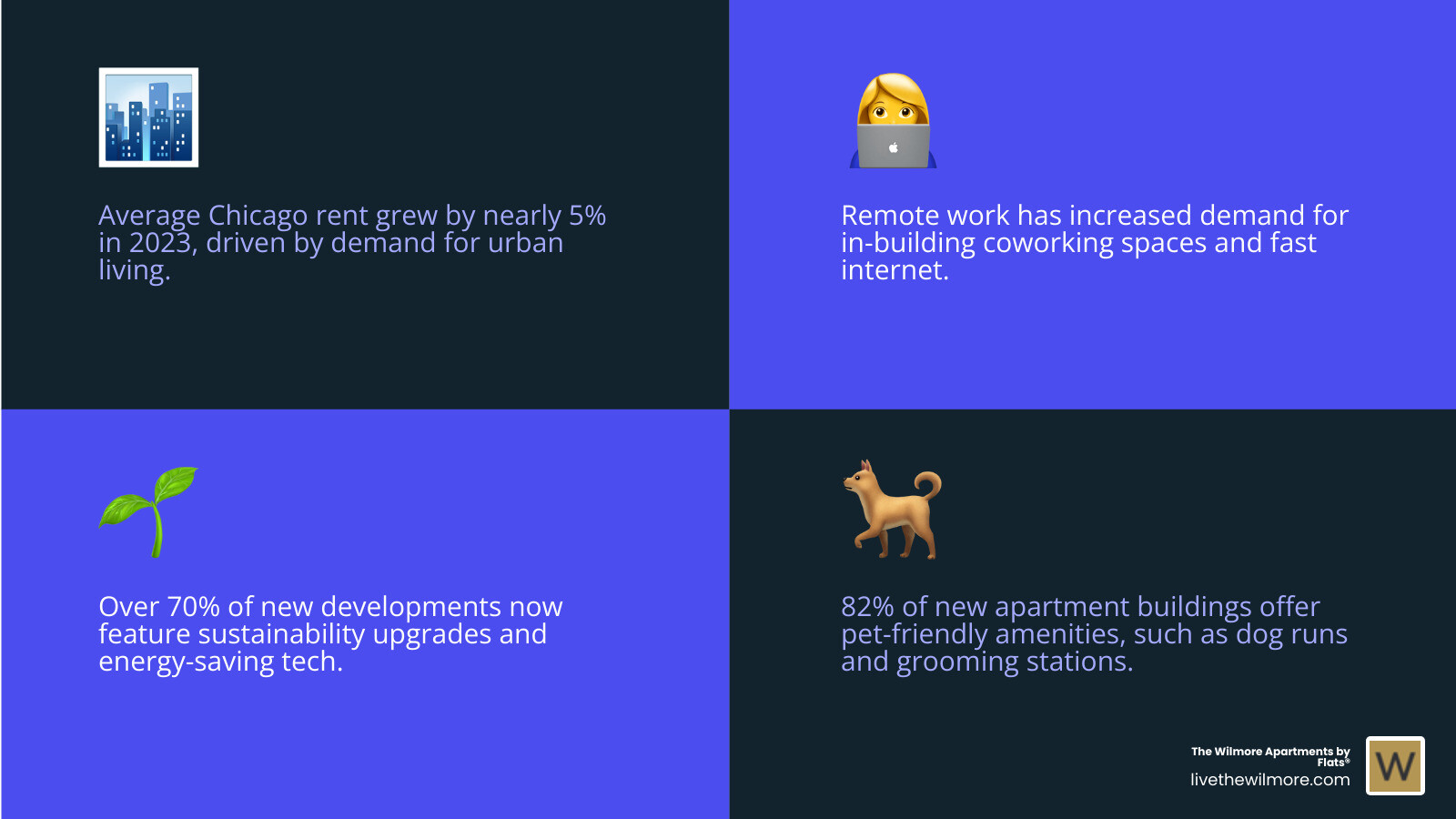
Frequently Asked Questions about Apartments in Chicago
How long does it take to secure an apartment in Chicago?
The typical timeline for securing apartments in chicago ranges from 2-4 weeks, depending on your requirements and market conditions. The process includes searching, touring, applying, and completing lease paperwork.
Applications are usually processed within 24-48 hours, though complex situations involving credit issues or multiple applicants may take longer. Having all required documents prepared in advance significantly speeds up the process.
Approval timelines can vary during peak leasing seasons, typically spring and summer months when demand is highest. Planning your search during off-peak periods may result in faster processing and potentially better rental rates.
Are utilities usually included?
Utility inclusion varies significantly among Chicago apartments, with some properties including heat, water, and electricity in rent while others require tenants to arrange these services separately. Historic buildings often include heat and water, while newer developments may separate all utilities.
Heat inclusion is common in older buildings with centralized heating systems, while newer properties often feature individual unit controls that require tenant-paid utilities. Understanding utility responsibilities helps you budget accurately for total monthly housing costs.
Internet and cable services are typically tenant responsibilities, though some luxury buildings include these amenities in rent. Factor these costs into your monthly budget when comparing properties.
How pet-friendly is the market?
Chicago's rental market is generally pet-friendly, with many buildings accepting pets with reasonable restrictions and fees. Most properties allow up to two pets per unit, though specific policies vary by building and landlord.
Pet fees typically include one-time deposits and monthly pet rent, with amounts varying based on pet size and type. Some buildings offer pet amenities like washing stations, dog runs, and pet-sitting services that justify additional costs.
Breed restrictions may apply in some buildings, particularly for larger dog breeds. Review pet policies carefully during your search to avoid complications during the application process.
Conclusion
Chicago's rental market offers incredible opportunities for renters seeking urban living with character, convenience, and community. From historic neighborhoods with tree-lined streets to modern developments with cutting-edge amenities, the city provides options that match every lifestyle and preference.
The key to success lies in understanding your priorities, researching neighborhoods thoroughly, and preparing for the application process. With over 23,000 available units and diverse neighborhoods to explore, Chicago's rental market rewards those who approach their search strategically.
The Wilmore Apartments by Flats® offers a prime example of modern Chicago living with high-end amenities and effortless access to everything discussed above. Our Uptown location provides the perfect blend of urban convenience and neighborhood charm, with luxury features that improve your daily living experience.
Schedule a Tour today to experience how The Wilmore combines modern design with the vibrant energy of Chicago's rental market.
